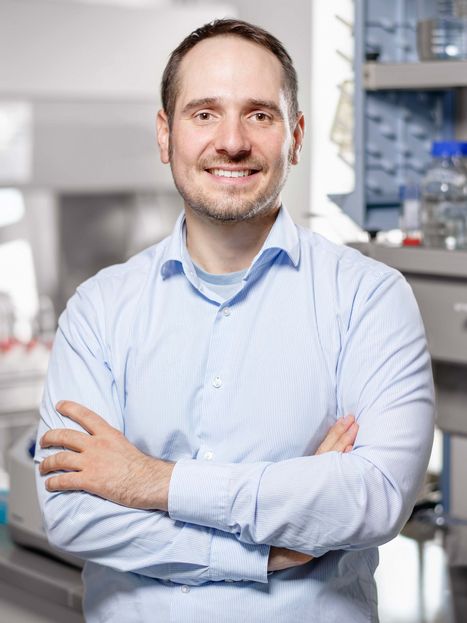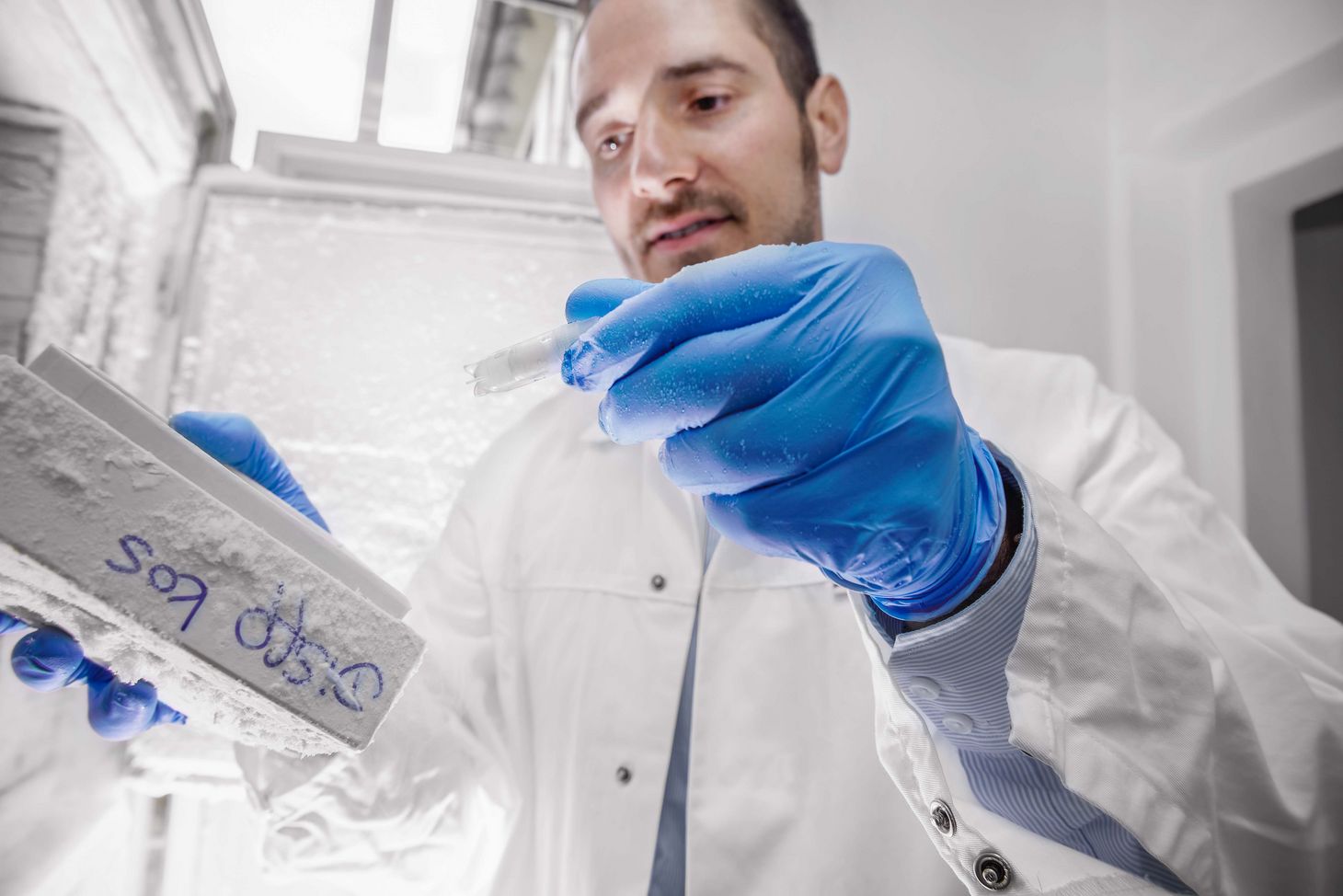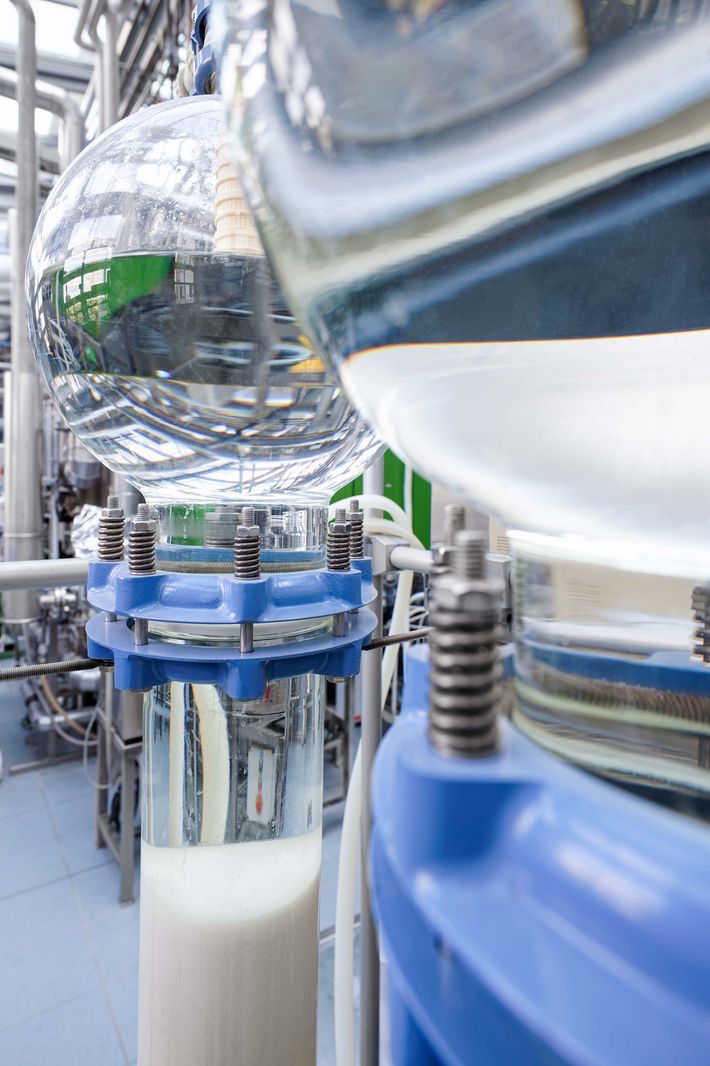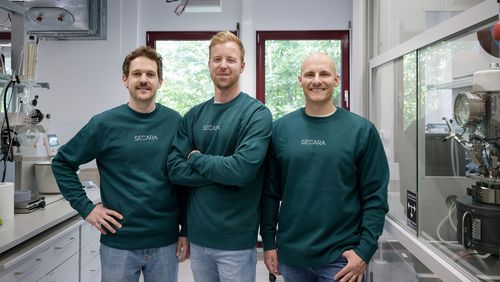
Fighting fungi with Keanu Reeves
Pierre Stallforth and his team have isolated an agent from a bacterial strain that is effective against a dangerous fungus found in vegetable crops. Because the newly discovered substance is so lethal, the researchers decided to name it after the action hero Keanu Reeves.
Botrytis cinerea, a fuzzy mould, is one of the most dreaded plant pathogens known. It infests more than 200 kinds of fruits and vegetables every year and is responsible for serious crop failures, particularly in the winemaking and strawberry industries. Now, researchers at the Leibniz Institute for Natural Product Research and Infection Biology (Leibniz-HKI) in Jena – which receives funding from the Werner Siemens Foundation – have discovered an agent that is extremely efficient at combatting the fungus.
The researchers located the agent in a bacterium of the genus Pseudomonas. These bacteria feature high among the favourite foods of amoebas and, by way of self-defence, many of them have developed potent amoebicides. Study leader Pierre Stallforth and his team have been working with these pseudomonads for quite some time, and they had already discovered a pseudomonad amoebicide called Jessenipeptin in earlier tests. “But when we switched off the gene for Jessenipeptin in the samples, the bacterium was still effective against amoebas,” says Sebastian Götze, lead author of the study. “That means it has to contain other amoebicides, too.”
As lethal as John Wick
As it happens, the researchers soon discovered the biosynthetic gene clusters of three additional agents. Because these natural products are so efficient, the team named them “Keanumycin A, B and C” after the film star Keanu Reeves, known for his action roles in films like The Matrix or John Wick. “The figures Keanu Reeves plays are also very lethal,” Götze says with a smile.
The researchers succeeded in isolating one of the keanumycins and then tested its effectiveness on a range of organisms – not just amoebas but also various pathogenic fungi. “Amoebas are evolutionary relatives of fungi, and they share several attributes such as their cell membrane components,” Pierre Stallforth explains. And, lo and behold, keanumycin did indeed prove its mettle in combatting Botrytis cinerea: in an experiment with hydrangeas, the scientists discovered that just the supernatant liquid from pseudomonad cultures – which no longer contained any bacteria – was enough to substantially reduce leaf damage caused by the fuzzy mould.
Keanumycin is also biodegradable, meaning it has the potential to be an environmentally friendly alternative to chemical pesticides. This is all the more interesting as pathogenic fungi often develop resistance to existing products. “Right now, we’re at the initial stages of developing an application with our partners,” say Pierre Stallforth and Sebastian Götze.
Treatment for fungal infections?
In addition to their value in agriculture, fungicides are also important in human medicine, as fungi are the root cause of numerous diseases. This makes keanumycin’s apparent capability to keep these kinds of pathogens in check all the more promising. In their study, which was recently published in the Journal of the American Chemical Society, the Jena researchers demonstrated that the agent had a major inhibiting effect on fungi such as Candida auris, a fungus that grows as yeast and is often contracted by hospital patients, who then develop blood poisoning. Although first identified only in 2009, the pathogen has spread quickly in many countries. Particularly worrisome is the fact that Candida auris is often resistant to antifungal medications.
But whether the newly discovered agent will ever become a drug remains to be seen. To be sure, all tests conducted thus far have shown that keanumycin is well-tolerated in human cells. However, approval processes for new medicines require years of – expensive – preclinical and clinical trials to confirm safety and effectiveness.


Seeking innovative substances
Despite the potential medical use of the newly discovered substance, Stallforth and his group aren’t primarily interested in developing new drugs. Their main goal is to find novel bioactive compounds using innovative concepts they have developed themselves. One key area is studying ecological relationships between organisms – like the interaction between predatory amoebas and the bacteria they prey on. Another research interest is seeking microbial agents in human history: in the WSS-funded palaeobiotechnology project, Pierre Stallforth and archaeologist Christina Warinner are looking for antibiotic substances in the dental plaque of early humans.
Interdisciplinary approaches are necessary for both lines of inquiry, and each research area derives benefits from findings in the other, Stallforth says. “When we’re looking for compounds with antifungal properties in pseudomonads, we’re drawing on bioinformatic expertise gained in the palaeobiotechnology project.” And vice versa: the newfound knowledge on how natural products can be isolated in living pseudomonads will also prove useful in the hunt for the remains of these kind of bacteria in prehistoric dental plaque.
> Link to the study
> Media coverage

![[Translate to English:] Bei Wirbelsäulenversteifungen setzen Chirurgen meist Pedikelschrauben aus Titan in die Wirbelkörper und verbinden sie mit Metallstäben.](/fileadmin/_processed_/2/9/csm_01-spinplanner_5477fa3028.jpg)

![[Translate to English:] Wenn Passatwinde im Golf von Panama das warme Küstenwasser aufs Meer hinausschieben, strömt aus 300 bis 400 Metern Tiefe kühles, nährstoffreiches Wasser nach.](/fileadmin/_processed_/b/a/csm_01-WSS-News-Seibold-upwelling_a08a676efb.png)
